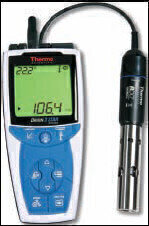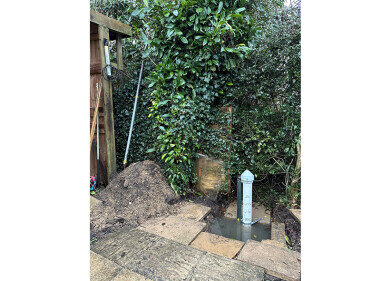Water/Wastewater
Thermo Scientific Orion RDO® – Improving the Accuracy and Ease of Field Oxygen Measurements
Apr 20 2009
Many chemical and biological reactions in ground water depend directly or indirectly on the amount of available oxygen. Dissolved oxygen may be monitored in ground water samples to examine the water quality. A change in dissolved oxygen value can indicate pollution by microbiological contaminants, organic matter, or reduced mineral phases. The Thermo Scientific Orion Rugged Dissolved Oxygen (RDO) sensor can be used in the field to measure for oxygen content directly in the sample of interest. This sensor shows similar readings to the polarographic sensor in groundwater samples taken from wells at depths of 10-30ft and water temperature rom 13-16ºC in Cape Cod, Massachusetts. Many wells had low dissolved oxygen concentrations of less than 1 mg/L, concentrations that are typically challenging for polarographic DO probes. However, the RDO sensor is quick to respond in low level oxygen solutions, as displayed in the graph below on the right. In a solution with little or no oxygen, the Orion RDO sensor response is equivalent in speed to the polarographic DO probe, but shows superior accuracy as it stabilises at zero. These measurements were made after a calibration in water saturated air, indicating that a zero calibration point is not required for accurate low level measurements with the RDO sensor.
The RDO sensor simplifies dissolved oxygen measurements. The RDO cap,with a lifetime of one year, replaces themembranes and electrolyte necessary for polarographic DO probes that require frequent maintenance. The RDO sensor utilises a luminescence technology to detect oxygen, in which the signal response is inversely related to the oxygen content, resulting in improved accuracy in low level samples. The stainless steel sensor guard protects the ROD cap and provides weight to the sensor, allowing for measurements at any depth. The sensor does not consume oxygen, so sample stirring is unnecessary, and a calibration sleeve is available, making in-situ field measurements easy and accurate. Visit our website at www.thermo.com/waterapps for application and technical information.
Digital Edition
IET 34.2 March 2024
April 2024
Gas Detection - Biogas batch fermentation system for laboratory use with automatic gas analysis in real time Water/Wastewater - Upcycling sensors for sustainable nature management - Prist...
View all digital editions
Events
Apr 30 2024 Melbourne, Australia
Apr 30 2024 Birmingham, UK
May 03 2024 Seoul, South Korea
May 05 2024 Seville, Spain
May 06 2024 Minneapolis, MN, USA


















